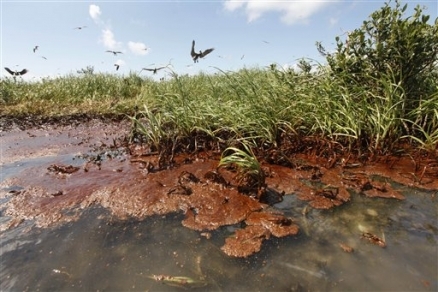Natural resource damage assessment for the Deepwater Horizon oil spill
The Oil Pollution Act authorizes certain federal agencies, states, and Indian tribes—collectively known as Natural Resource Trustees—to evaluate the impacts of the Deepwater Horizon oil spill on natural resources. The trustees for the Deepwater Horizon oil spill are: the U.S. Department of Commerce, through the National Oceanic and Atmospheric Administration, the U.S. Department of the Interior, through the U.S. Fish and Wildlife Service, the National Parks Service, the Bureau of Land Management, and the Bureau of Indian Affairs, and the states of Louisiana, Mississippi, Alabama, Florida, and Texas.
These trustees are responsible for studying the effects of the spill through a process known as Natural Resource Damage Assessment (NRDA). As part of this process, scientists work together to identify potential injuries to natural resources and lost human uses resulting from the spill. NRDA activities have been divided into these categories that focus on specific species, habitats, or uses impacted by the Deepwater Horizon oil spill:
- Marine mammals and sea turtles
- Fish and shellfish
- Birds
- Deep water habitat (e.g., deepwater coral)
- Near-shore habitats (including sea grasses, mud flats, coral reefs)
- Shoreline habitats (including salt marsh, beaches, mangroves)
- Land-based wildlife and habitat
- Human uses of natural resources (fishing, boating, beach recreation)
Contents
Phases of a Natural Resource Damage Assessment (NRDA)
1. Preassessment Phase—This phase involves collecting information about how natural resources are exposed to the oil, what is occurring or is likely to occur as a result of exposure, and over what period of time and space impacts are expected to occur. This phase may also include studies to document the condition of resources prior to exposure to the oil and to confirm the presence of oil from the Deepwater Horizon incident.
2. Injury Assessment Phase—If the trustees decide to conduct a full natural resource damage assessment, we will implement studies to evaluate the extent, severity, and duration of impacts from the oil spill. An evaluation will also be made to determine the time needed for these resources to recover. Throughout the preassessment and injury assessment phases, we will also consider how natural resources harmed by the spill may be restored.
3. Restoration Planning—This phase will identify restoration actions for which the responsible parties, including BP, will be required to pay in order to fully compensate the public for the injuries to natural resources caused by the Deepwater Horizon oil spill. This may be accomplished through specific restoration projects or by the payment of damages to the trustees. The projects, whether performed by the responsible parties or the trustees, may include direct restoration or rehabilitation of the injured resources, or replacement or acquisition of resources equivalent to those injured.
Deepwater Horizon—After the Spill
The trustees have and will continue to release preassessment study plans developed over the course of the spill. The process for development of each plan reflects input and advice from experienced resource managers and leading scientists who specialize in studying oil spills and natural resources in the Gulf of Mexico. Because study methods used for preassessment activities may also be applied in future injury assessment studies, some of the plans provide for both near and long term data collection or studies. As data from the studies become available, we may adapt study approaches or methods, or consider conducting additional studies, as needed, to ensure that the impacts of the oil spill can be fully identified and measured. This process is intended to obtain the highest quality scientific information available to determine how much harm to resources has occurred and how much restoration is required.
BP’s Involvement in Assessment
Under the Oil Pollution Act’s Natural Resource Damage Assessment regulations, in some instances, BP has been working cooperatively with the trustees to collect preassessment data. The trustees have afforded BP the opportunity to provide input in the development of preassessment study plans and many of the plans have been reviewed and signed by representatives of trustees and BP. Cooperation facilitates the collection and sharing of reliable data, while allowing all parties to conduct their own analyses and interpretations of that data.
